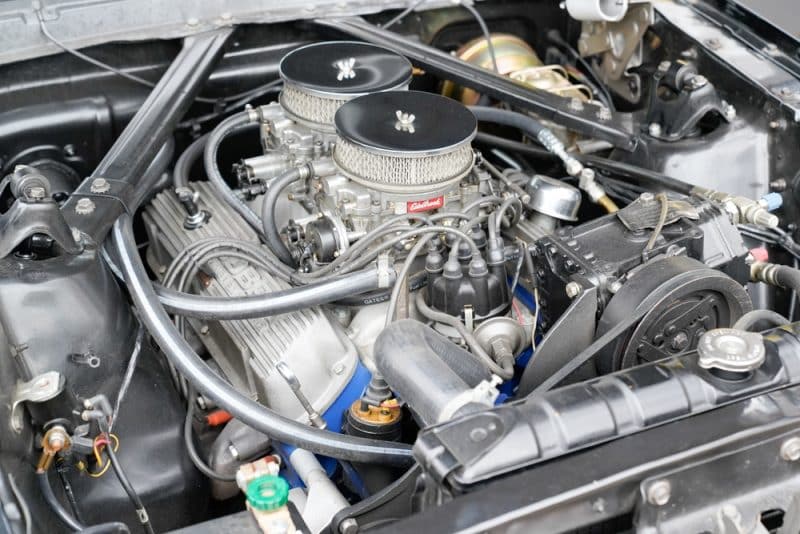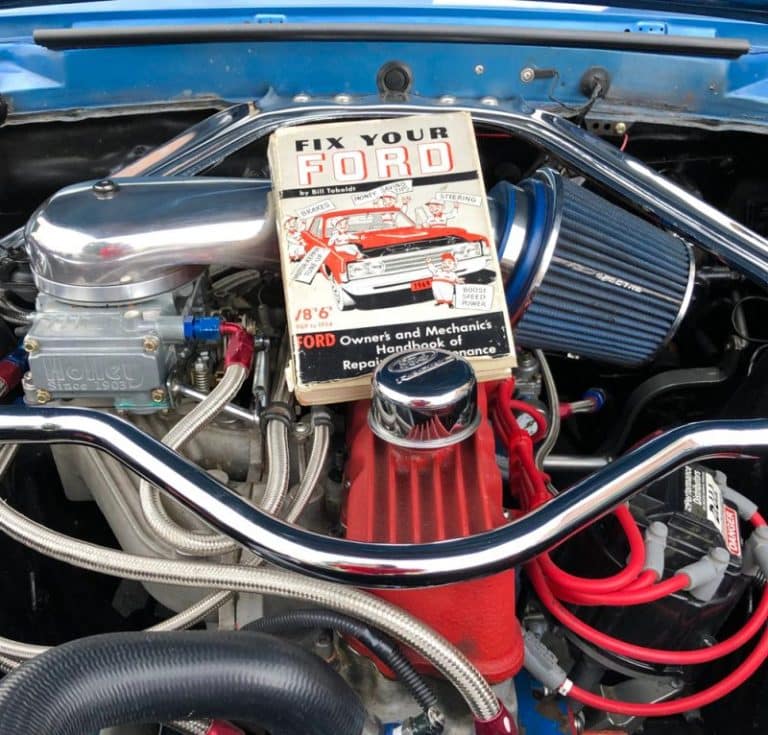Does Ford F-150 Have Cylinder Deactivation?
The Ford F150 is one of the best-selling vehicles in the world. It is a pickup truck that gives one of the best driving experiences, considering how fast it moves.
Each new model of this vehicle comes with features more advanced than the previous.
Due to its top speed, one feature that individuals would be interested in is its ability to consume less fuel.
With the amount of power the truck produces, does it have cylinder deactivation? Let’s find out.
The cylinder deactivation feature is available on the 2021 Ford F150. The 2021 model is the first model of the Ford F150 to have this feature. This feature alone catches the interest of most individuals and raises the value of the vehicle.
Does Ford use Cylinder Deactivation?

Ford uses cylinder deactivation but not in all of their cars. The cylinder deactivation feature is commonly utilized on V6 or V8 engines.
It reduces the engine’s displacement while it operates: When all cylinders are turned on, the engine produces more power; when some are turned off, the engine produces less power.
Cylinder deactivation, also known as cylinder-on-demand (CoD), is a creative use of technology that prevents some internal combustion engine (ICE) cylinders from taking in fuel and air while running.
Does Ford F150 5.0 have Cylinder Deactivation?
The Ford F150 5.0 engine has cylinder deactivation technology. Ford’s official website also states this under the engine features.
Ford has six different engine options, each with a different number of cylinders, engine size, and performance characteristics.
For example, the Ford F150 5.0 comes with a Coyote engine. You may be curious to know about the Cylinder heed temperature sensor.
The Ford Motor Coyote engine is a 5.0-liter naturally ventilated V8 engine that powers sports vehicles like the Ford Mustang and pickup trucks like the Ford F-150.
The 5.0 liter V8 Coyote engine is one of the most powerful and conventional 8-cylinder engines available.
It receives commendation for its performance, dependability, and overall ease of use.
Because of its greater size and lower fuel ratings, its manufacturer has provided cylinder deactivation features for this engine, which would increase fuel efficiency by 10-15%.
Furthermore, it is compatible with larger engines seen in sports cars and pickup trucks.
According to the engineering manager for the Ford F150 5.0, they use a new cylinder deactivation technology.
This new technology is known as a Variable Displacement Engine (or VDE).
The technology enables the 5.0L Coyote V8 engine in the F-150 to go into a four-cylinder mode, turning off half of the cylinders when they aren’t in use.
Furthermore, Ford is developing this technology in-house, whereas most companies outsource it.
How Does Ford Cylinder Deactivation work?
When moving your vehicle at top speed, you don’t always need all of the engine’s power.
So a way by which the engine can save fuel is by deactivating some of the cylinders.
When your vehicle’s computer brain determines that you don’t require all of the engine’s power, an electrically driven solenoid with other engine components enables cylinder deactivation.
A cylinder deactivation solenoid valve is activated to prevent fuel and air from entering the cylinder.
It means that the combustion process in some of those cylinders is unable to take place, resulting in the usage of less fuel overall.
The engine cylinder deactivation technology allows the engine displacement to change briefly, a feature sometimes referred to as a variable displacement engine.
For example, if half of a 4.0-liter V8’s cylinders goes off for a short period, the engine effectively becomes a 2.0-liter V4 for the length of the deactivation.
The computer brain of the engine detects when all eight cylinders do not need to operate.
As a result, the four valves are closed, the fuel to four cylinders is stopped, and the air intake and exhaust are closed.
In low-power settings, like traveling at highway speeds, a powerful engine running on all cylinders is unnecessary.
However, under certain driving situations, temporarily converting it to a smaller engine can increase fuel economy by up to 25%.
The engine’s main brain, also known as the engine control unit (ECU), is in charge of cylinder deactivation. However, more power is required when you accelerate.
When this happens, the mechanism reactivates the deactivated cylinders. Such transmission is always automatic; that’s why it’s practically impossible to notice the shift.
When did Ford Start Using Cylinder Deactivation?
Ford introduced the cylinder deactivation feature in 2016. This feature was to be made available with the 1.0-liter EcoBoost engine.
The 1.0-liter EcoBoost petrol engine is an award-winning engine manufactured by Ford.
Ford’s compact and powerful 1.0-liter EcoBoost engine was implemented in 2018 as the world’s first three-cylinder engine with cylinder deactivation.
The achievement is the result of Ford engineers’ inventive innovation across Europe.
Moreover, it defies industry expectations that a three-cylinder, the variable capacity engine, could not produce the efficiency required for small car requirements.
Cylinder deactivation will lower 1.0-litre EcoBoost customers’ operating expenses by actively managing and reducing fuel supply and valve function for one of the engine’s cylinders when full capacity isn’t required, such as when cruising or driving with low engine demand.
Which Ford Engines have Cylinder Deactivation?
To reduce the amount of fuel used when driving any Ford car, Ford started equipping their new vehicles with cylinder deactivation engines.
The first engine from Ford to have cylinder deactivation is the 1.0-liter EcoBoost.
The 1.0-litre EcoBoost engine is a one-of-a-kind engine designed and built by Ford to provide drivers an extra burst of efficiency no matter the distance and speed at which they are traveling.
As more cars are created with the EcoBoost engine, it has become popular throughout the years.
You can utilize EcoBoost engines in all of Ford’s vehicles. Most Ford vehicles today are already very fuel-efficient.
A handful of models come equipped with the EcoBoost engine; if they don’t, the engine is available for drivers wishing to increase their efficiency.
A few of the most popular Ford models featuring the EcoBoost engine, which is available as a standard or optional feature, are;
- Ford Focus
- Ford Fusion
- Ford Escape Fiesta
- Ford GT
- Ford Edge
- Ford Flex
Another engine from Ford that comes with cylinder deactivation is the 5.0L Coyote V8 engine.
The Ford Coyote engine is a brand-new 5.0-liter gasoline V8 engine used in the Ford Mustang and Ford F-150 for the 2011 model year, replacing the former 4.6L/5.4L Modular engines.
Ford created the new 5.0L V8 engine to compete with Chevrolet GM’s 6.2L V8 engine.
Subsequently, Ford engineers developed a lesser displacement engine that provides the same level of power as its competitors while running on standard 87 octane unleaded fuel.
This innovation increases fuel efficiency and power delivery while lowering emissions.
The Ford 5.0L Coyote V8 engine powers the following cars:
- Ford F-150
- Ford Mustang
How to Turn off the Cylinder on Ford F150?

When you are driving at top speed, and your vehicle goes into cylinder deactivation mode, you most likely will not notice it because it is always a smooth transition.
To turn off the cylinder deactivation, open the bonnet of your vehicle and go to the battery.
On the battery, there is a negative terminal; find it and unplug it. By doing so, you are turning off the cylinder deactivation by disabling the battery monitoring system that Ford installed.
However, after doing this, you get a warning light telling you to check the battery monitoring system when you turn on your engine.
When this comes up, press ok, and you are good. As long as the cable remains unplugged, this warning light will come on every time you start your vehicle.
Because of worries about hazardous emissions to the environment, I will not recommend turning off the cylinder deactivation feature is not recommended.
Your vehicle will also not be able to detect when there is a fault in the engine. However, it is a wonderful feature for increasing your truck’s mileage.
2022 F-150 Coyote 5.0L – How to Avoid Cylinder Deactivation
Summary
As we move deeper into the future of transportation with increasing emissions and fuel efficiency rules, automakers are getting more inventive in their efforts to release less pollution and consume less fuel.
Cylinder deactivation technology, in particular, effectively shuts down a number of an engine’s cylinders when they aren’t in use.
There’s about a 10-15% gain in fuel economy with this feature.






